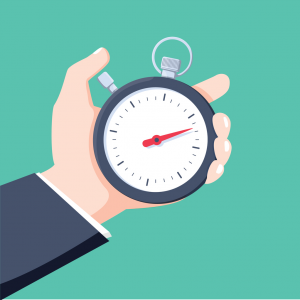
The “90-Second Rule” is a concept about managing high emotions and reactions. It is simple and has a surprisingly high success rate in steering off strong emotional reactions.
If you get frustrated and can’t stop from being emotionally overreactive, this concept can help you manage your response. This applies whether you’re with a partner, work colleague or friends.
Dr. Joseph LeDoux, a neuroscientist at New York University, first identified the 90-Second Rule. His research found when a person experiences an intense emotional reaction, the physiological response associated with that emotion typically lasts for around 90 seconds. This means that the initial surge of emotion and accompanying bodily sensations tend to naturally subside within that timeline.
The 90-Second Rule is based on the idea that we cannot always control our initial emotional reaction. But you do have the power to influence how you respond to and manage that emotion in the moments that follow.
Rather than allowing the emotion to continue to escalate, the 90- Second Rule encourages people to practice mindfulness, deep breathing or other calming techniques to help the body and mind return to a more balanced state.
Neuroanatomist Dr. Jill Bolte Taylor described the 90-Second Rule this way.
“When a person has a reaction to something in their environment, there’s a 90-second chemical process that happens; any remaining emotional response is just the person choosing to stay in that emotional loop.”
There is a moment (actually 90 seconds) between stimulus and response that can help you maintain your emotional integrity and not escalate.
The use of this concept has been popularized in the context of mindfulness and emotional regulation as a way for individuals to better manage their emotions and reduce stress.
Please click to my site to get a more detailed version of the 90-Second Rule including four specific ways that the 90-Second Rule can work for you.
The 90-Second Rule and Four Ways to Use It
If you can wait out the initial wave of emotion, it will subside on its own, allowing you to respond in a more rational and controlled manner. It can help keep you from riding the up escalator of your emotions.
Here are some ways to use mindfulness and the 90-Second Rule to maintain emotional and self-control:
Mindfulness: The 90-Second Rule has been incorporated into mindfulness practices as a way to help individuals better manage their emotions and reduce stress. Mindfulness-based therapies often involve learning to observe and acknowledge emotions, rather than immediately reacting to them.
Countdown: When you begin to feel triggered, look at a clock or your phone and begin to count down 90 seconds. This leads you to observe the emotional response instead of engaging with it.
Pause. Inhale. Exhale: Notice the tension in your body (neck, jaw, hands, shoulders), and actively relax those areas. Inhale and exhale again during the 90 seconds.
Name Your Emotion: Notice how you feel it in your body. Reassure yourself that you are safe. Ground yourself in your environment. By taking these actions, you distance yourself from the feelings and become an observer instead of a participant.
Use these tools to put the 90-Second Rule into action. If you can wait out the initial wave of emotion, it will subside on its own, allowing you to respond in a more rational and controlled manner.
As I said at the outset, it’s simple. Notice I didn’t say easy. But adopting the 90-Second Rule you can improve your relationships at home, at work and with friends.


Leave a Reply